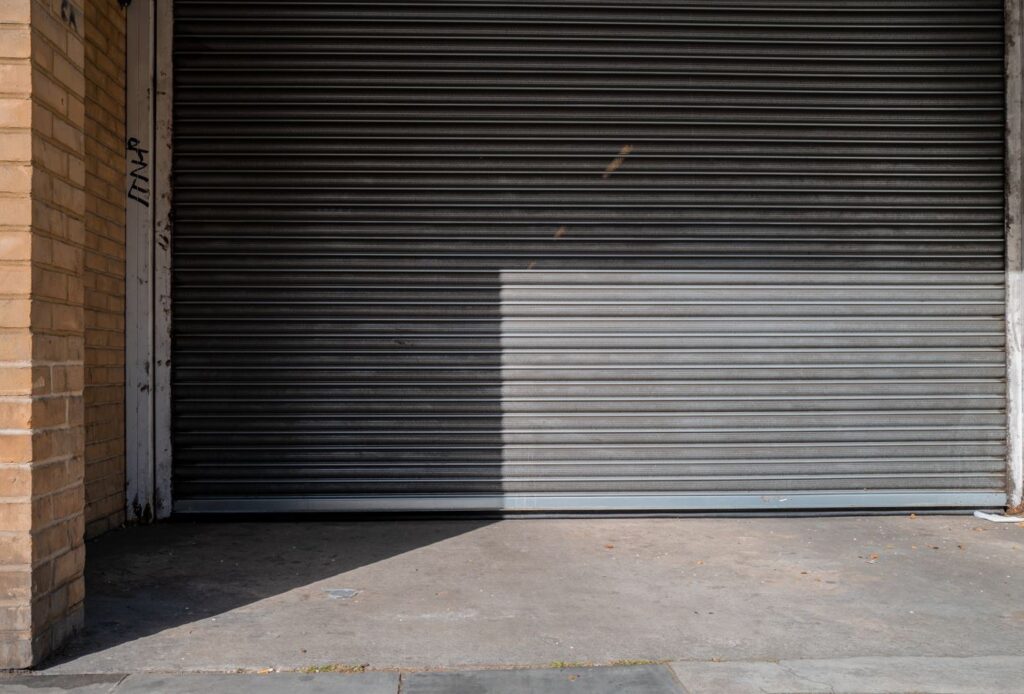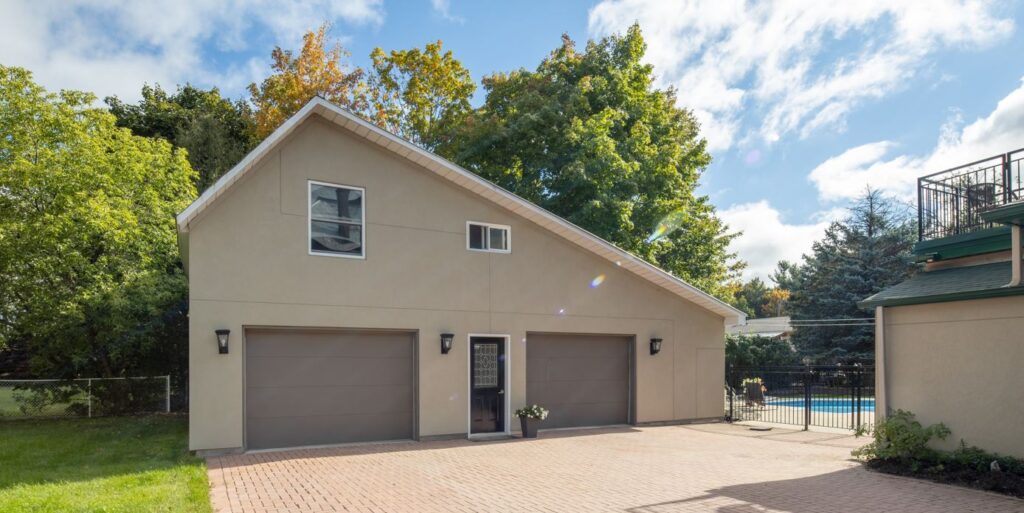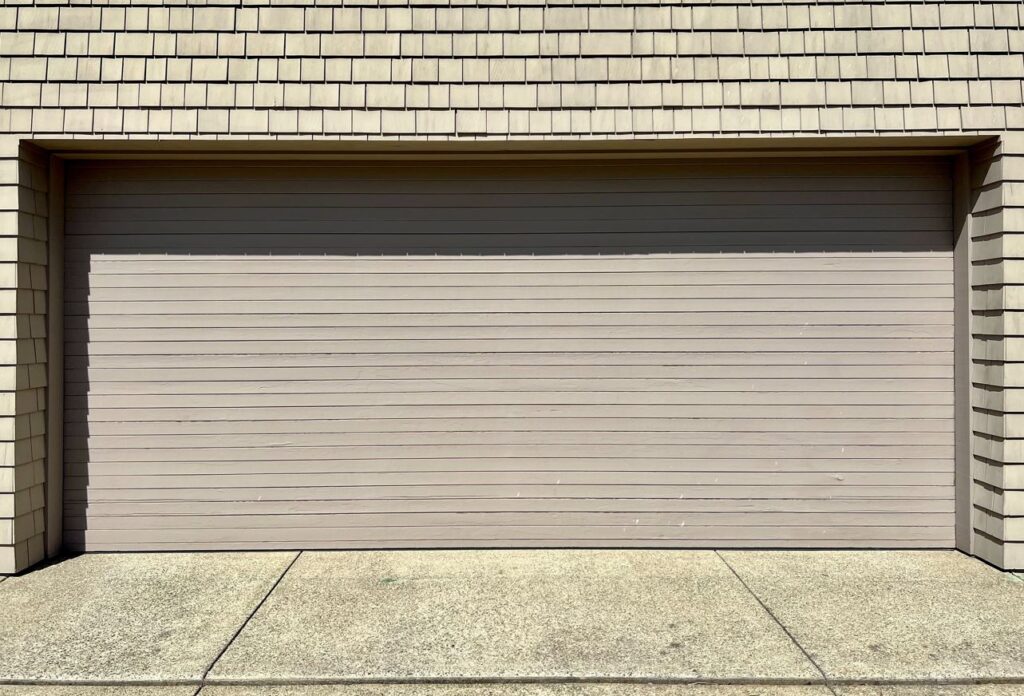People often store paint they don’t need in the garage, thinking it will work fine if they need it again. It can be shocking to find that the paint has gone bad when they open it. If you’re a big fan of do-it-yourself projects or like to keep paints and chemicals in your garage for different projects, you need to understand how to store these things safely.
People often ask about storing paint: “Can you store paint in the garage?” It is very important to store paint correctly to stay in good shape and keep working at its best.
Most of the time, you’ll put your paint away until you need it again. A lot of the time, people buy paint in greater quantities than they truly need. People often put their paint away if they need to touch it later. It seems simple.
Keeping your paints and chemicals in the right way in the garage keeps them in good shape and your family and your house safe. In this complete guide, we’ll give you all the information you need to keep paints and chemicals safe in your garage.
Why It’s Important to Store Paint Properly in the Garage
It’s important to store paint properly in the garage for several reasons. The main benefit is that it makes the paint last longer and improve. Extreme temperatures or changing humidity levels can change the consistency and texture of paint, making it hard to spread out evenly. By keeping paint in a controlled environment in the garage, you can keep the original formula and make sure it can still be used for future projects.
Also, storing paint correctly helps keep it from going to waste. If you store paint cans properly, they can stay intact and dry. That not only wastes useful things, but it can also hurt nearby stored things. Keeping paint in the garage keeps it out of reach of possible dangers and reduces the likelihood of accidents or waste.
Proper paint storage does more than keep the quality and stop waste; it also makes things safer. A lot of paints have chemicals in them that can be dangerous if they are not handled properly or stored properly. Kids and pets are less likely to accidentally eat or be exposed to toxic substances if you store paint in the garage, away from them. You can also quickly find and manage dangerous materials carefully by organising and labelling paint cans.
What Is the Best Way to Store Paint?
Paint lasts longer when it doesn’t come into contact with air as much. You could repackage the container of paint you used most of so you can use it again later. You may use glass jars so that you can see the colour. You may leave it inside the paint can, but make sure the top can still be sealed. Get rid of all the paint on the rim so it can seal. To keep the top from getting dented, use a mallet made of rubber rather than a hammer when you put it on.
The paint should have a label so you can find it again. Write down the room and colour. When you intend to fix up a part later, this will make it easy.
Keep the paint somewhere cool and dry. There shouldn’t be any water on the bottom, so it should be on shelves. The metal will rust in water, which can damage the paint. Any garage that doesn’t have climate control won’t work because temperature changes will damage the paint.
Using the paint after it freezes will be impossible because the solids and liquids will separate forever. Pigments and binders will only work well if it is hot enough. When this occurs, the paint can’t stick to things anymore. The best places to store paint are in an accessible closet or a washroom with climate control.
Factors to Consider for Paint Storage
Temperature
The temperature at which you store paint greatly affects how well it works. Extreme heat and cold temperatures can change the makeup of the paint and make it useless.
- Freezing Temperatures: Paints that are water-based might separate and solidify when they freeze, making a lumpy, uneven, and useless mess. Paints that are made from oil can also get thick and cause problems.
- Extreme Heat: Water-based Paints can dry out in hot weather, while oil-based paints can get too thick. Also, heat can cause off-gassing, which releases harmful chemicals that could harm your health.
Pate should be kept between 10 and 27 degrees Celsius (50 and 80 degrees Fahrenheit) to keep its quality and consistency.
Humidity
If there is too much humidity, the paint’s original container can rust or corrode, which can contaminate the paint. A storage area with good airflow can help keep your paints from getting too humid and ruining them.
Exposure to Sunlight
Direct sunlight can fade your paint’s colour and break down its chemicals. Paint should always be kept in a cool, dark place without direct sunlight.
Accessibility
Make sure that the place you choose to store things is easy to get to. This will make it easy to get paint cans when you need them for future projects.
By considering these things, you can find the perfect place to store the paint in the garage that will keep its quality.
FAQs About Garage
Can I store paints and chemicals together?
Because paints and chemicals can react dangerously when mixed together, storing them together in a single location is generally not recommended. Make sure to keep them apart.
How do I dispose of old paints and chemicals safely?
Get in touch with the hazardous waste disposal facility in your area to receive directions on how to dispose of old paints and chemicals safely.
What should I do if a chemical spill occurs?
If a chemical spill occurs, the area should be ventilated, protective gear should be worn, and the instructions for cleaning up the spill should be followed exactly as written on the chemical’s label.
Can I store paints and chemicals on open shelves?
It is possible to store paints and chemicals on open shelves; however, it is much more prudent to use closed cabinets or containers to lessen the risk of exposure and avoid spills.
How can I improve ventilation in my garage?
You can get better ventilation by putting in exhaust fans, opening the windows, or employing air purifiers that are designed specifically for garages.
Tips for Storing Paint in the Garage
There should be a plan for your garage if rainbows of paint cans are piled up.
It’s easier to do DIY projects in the future when you’re organised. It additionally keeps your paint fresh and ready to use.
Set Things Up by Paint Formula
Let’s not get too complicated. Keep your paints separate by type: enamel, latex, oil-based, or acrylic. This way, you’ll always be able to grab the proper can for the job and avoid any unpleasant surprises.
Insulate Your Garage
Putting insulation in your garage will keep the temperature stable and keep water out, making it a good place to store paint.
Color Code
Then, put them in order by colour. Put on colour labels or stickers that say the name or code of the shade. The next time you need to find that exact shade of cerulean blue, you’ll be glad you did this.
Use Shelves or Cabinets
Paint cans should be included in the rain on the garage floor. Instead, they should be kept on shelves or in cabinets.
Label Everything
- Labels are like ID cards for your paint cans.
- Do more than change the colour.
- Write down when you bought the paint, its brand, and where you’ve used it.
You can use a Sharpie, but a maker of labels makes it look more professional. Keep a paint swatch on the lid as well. Often, it will save you the trouble of opening multiple bottles to find the desired colour.
Make Sure the Air Flow Is Good
Ensure your garage has good airflow so humidity doesn’t build up and mould or mildew doesn’t grow.
Paint Jars Should Be Tightly Sealed
Ensure the lids on paint containers are tight so that paint doesn’t dry out when it comes into contact with air.
Find Alternative Storage
Your garage may be too crowded or not the best place to store paint. Don’t worry; there are great options available.
Your paint’s new penthouse could be a climate-controlled storage unit or a well-kept basement.
Climate-controlled storage units keep the temperature and humidity just right so your paint stays in great shape. If your basement has no mould and good airflow, it is a great place to store your additional paint cans.
Picking the Right Containers
The containers you use to store paint in the garage are important to keep their quality and avoid spills or leaks. To help you choose the right containers, here are some tips:
- Durable and sturdy: Pick containers of strong, long-lasting materials that can handle the paint’s weight and keep them from breaking. Accidental leaks or spills are less likely to happen when containers are strong.
- Airtight and sealable: Choose containers with tight-fitting lids that don’t let air in. This keeps air out of the container, which would dry out the paint or make skin on the top of it. VOCs, or volatile organic compounds, are less likely to enter the garage when containers don’t let air in.
- Transparency: Choose clear or mostly clear containers so you can see the colour, amount, and scenario of the paint without opening each one.
- Proper size: Pick containers big enough to hold the paint you want to store. It’s best to choose boxes that leave little space to keep the paint from coming into contact with air.
Remember that the best way to store things for a long time is in their original paint cans, which are made for that purpose. But if you need to move paint to another container, ensure it meets the criteria outlined above to keep the paint’s quality and avoid any accidents.
Reusing the Paint
Before you use the paint, don’t shake it when you open it. First, look on top for paint skin. It will not mix with the rest of the paint, so you should take it off. It will give your paint more texture. If it falls in, you will have to tug on the paint before you use it.
Before each use, you must stir the paint to bring the different parts back together. When paint is no longer stable, you shouldn’t use it because you can’t mix it.
Conclusion
Keep paint in the garage to make sure it stays good and lasts a long time. Proper storage helps keep the paint’s original recipe, stops waste, and lowers the chance of accidents or waste. Storing things correctly also makes them safer because it keeps people from being exposed to dangerous materials and makes sure that paint cans are handled correctly.
Putting paint away in new containers with lids that can be sealed and using rubber mallets to keep the paint from denting is the best way to do it. Paint cans should be labelled so that they are easy to find and use again. To keep the paint cool and dry, put shelves on the bottom to keep the metal from rusting. Paint should be kept in a closet that is easy to get to or a bathroom with temperature control.
Temperature, freezing temperatures, extreme heat, humidity, sunlight exposure, and ease of entry are all things to think about when storing paint. The temperature and humidity should be between 10 and 27 degrees Celsius (50 and 80 degrees Fahrenheit). Paint’s chemicals can break down and lose their colour in direct sunlight, so keep it somewhere cool and dark.
Storing paint properly in the shed is important for keeping its quality and making it last longer. You can find the best place to store paint in your garage by thinking about things like temperature, humidity, sunshine exposure, and ease of access.
Sort your paint cans by type, insulation, colour code, shelves or cabinets, and labelling them before putting them away in your shed. Paint cans should be kept separate by type, like enamel, latex, oil-based, or acrylic, so that nothing gets mixed up. Keep your garage at a steady temperature and stop water damage by insulating it. Put the shade’s name or code on the paint can, and don’t put things on the floor. Instead, use shelves or cases. Mark everything with the date, the brand, and the place where it was made. Keep the air moving to keep mould from growing and humidity from building up. Close paint barrels tightly to keep paint from drying out.
Look for other places to store your things, like climate-controlled storage rooms or clean basements. These units keep the temperature and humidity just right, which keeps paint in great shape. Pick containers that are strong, won’t leak, are clear, and are big enough to hold the paint you want to keep. For long-term storage, keep paint in its original cans, but make sure they meet the above requirements to keep the quality high and avoid mistakes.
To reuse paint, don’t shake it when you open it, take off the paint skin to add structure, and stir it every time you use it. Paint that is no longer steady should not be used because it can’t be mixed.
Content Summary
- Discover the dos and don’ts of storing leftover paint in your garage.
- Unveil the secrets to prolonging the life of stored paint.
- Are you making the common mistake of incorrect paint storage in your garage?
- Maximise the usability of your DIY paint supplies with correct storage techniques.
- Understand the impact of extreme temperatures on stored paint quality.
- Ensure paint longevity by storing it in a controlled environment.
- The true cost of improper paint storage: waste and potential hazards.
- Make your garage a safe storage space for paints and chemicals.
- Dive deep into the importance of proper paint storage.
- Factors affecting paint consistency: temperature and humidity fluctuations.
- Minimise paint waste by storing cans correctly.
- Prioritise safety: Store paint away from kids and pets.
- Elevate paint longevity: prevent air exposure and use airtight containers.
- Expert tip: Use glass jars for visible paint storage.
- Always label your paint containers for easy identification.
- Key criteria for the ideal paint storage location: cool, dry, and elevated.
- Caution: A non-climate-controlled garage can be detrimental to paint.
- The adverse effects of freezing temperatures on paint consistency.
- Beware of paint exposure to extreme heat in your garage.
- Ensure optimal paint storage temperature between 10°C to 27°C.
- Excess humidity can lead to paint contamination; store wisely.
- Keep your paint out of direct sunlight to preserve its colour and quality.
- Opt for accessible paint storage for efficient DIY project execution.
- Your guide to decluttering and organising paint cans in the garage.
- Segregate paints by type: enamel, latex, oil-based, and acrylic.
- Enhance paint storage with garage insulation techniques.
- Streamline your paint selection process with colour coding.
- Prioritise using shelves or cabinets for paint storage.
- Comprehensive labelling: The game-changer for paint storage.
- Maximise garage airflow to combat humidity and potential paint damage.
- Essential tip: Ensure paint container lids are tightly sealed.
- Exploring alternative storage options for your paint collection.
- Benefits of a climate-controlled storage unit for paint preservation.
- Considering your basement for paint storage? Ensure it’s mould-free.
- The right paint storage container can make all the difference.
- Ensure durability and sturdiness for your paint storage containers.
- Emphasise airtight and sealable containers to prevent paint drying.
- Consider transparent containers for easy paint identification.
- Don’t compromise on container size; minimise air exposure.
- When shifting paints, choose containers that maintain quality and prevent accidents.
- The golden rule before reusing paint: No shaking!
- Remove paint skin to maintain its smooth texture.
- Always stir the paint well before each use.
- Paint not blending? It might be time to discard it.
- Discover why temperature and humidity are critical for paint storage.
- The ultimate guide to reusing and storing leftover paint.
- Enhance paint longevity with strategic storage in your garage.
- Improve your DIY projects by maintaining the quality of your paint.
- Keep hazardous chemicals at bay with correct paint storage techniques.
- Revolutionise your garage paint storage with these expert tips.



